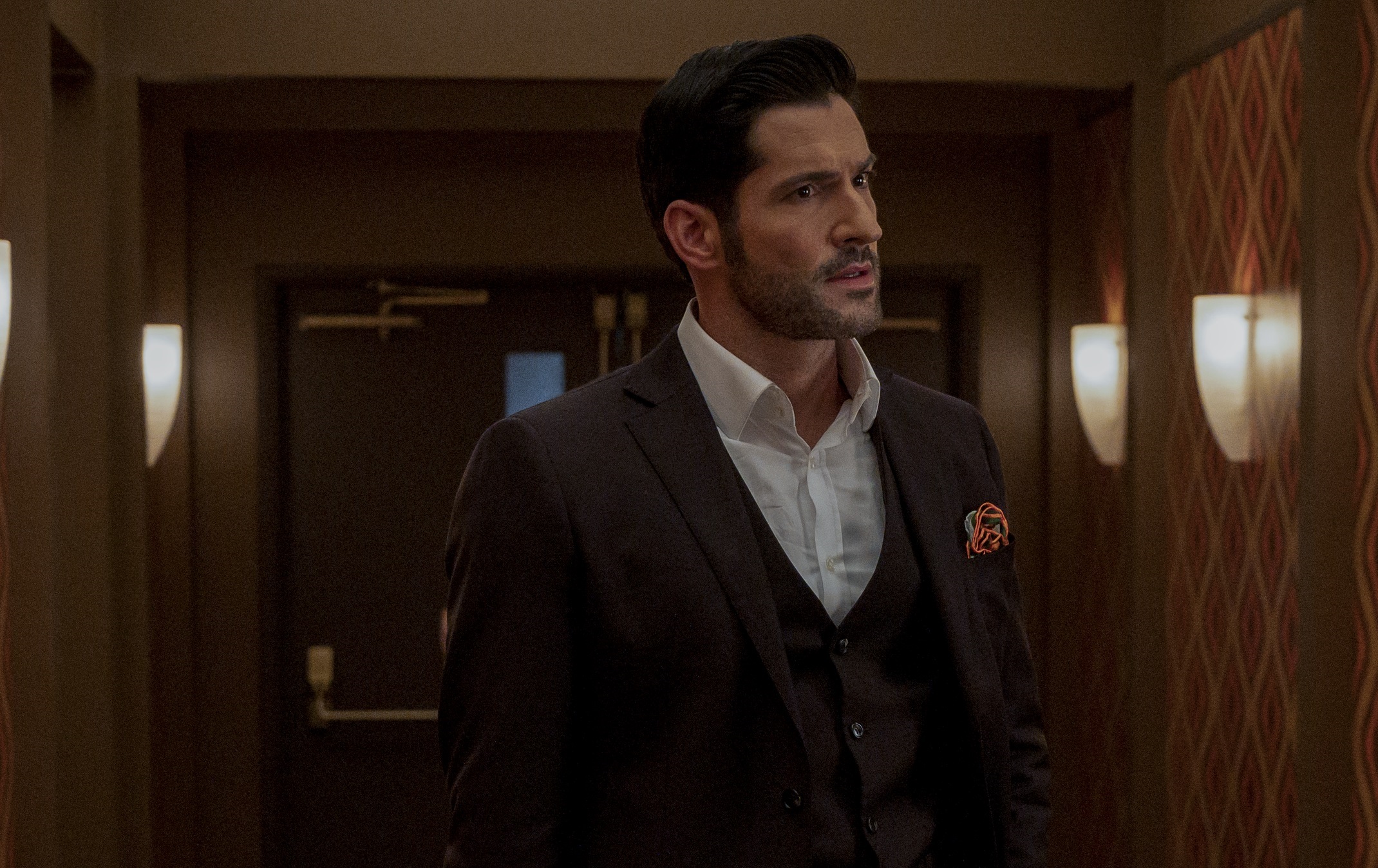Table of Contents Show
Lucifer, Satan, Beelzebub, The Devil: all names for the most infamous character in Western culture. The legend goes that The Devil staged an uprising against God, his creator. When Satan’s rebellion failed, God forced him to rule Hell—a new kingdom, populated by sinners and demons. Nowadays, Satan is a character commonly explored in media. From poems, books, movies, and TV, Satan is not hard to find.
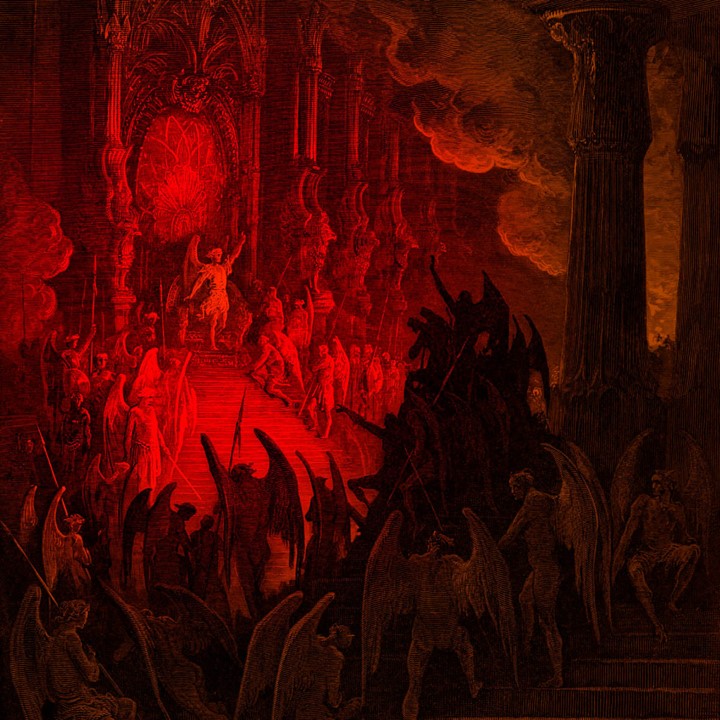
But how has the presentation of The Devil changed over time? While this article will not map a complete trajectory of The Devil’s appearances in media, it will provide a rough overview. By examining Dante’s Inferno (( Alighieri, Dante. The Divine Comedy. Trans. John Ciardi. New York: W.W. Norton Company, 1970. Print. )) (1320), The Brothers Karamazov (( Dostoevsky, Fyodor. The Brothers Karamazov. Translated by Richard Pevear and Larissa Volkhonsky, FSG, 1990. )) (1879), The Emperor’s New Groove (( Dindal, Mark. The Emperor’s New Groove. 15 December 2000. Buena Vista Pictures. Film. )) (2000), and Lucifer (( Kapinos, Tom, developer. Lucifer. Warner Bros. Television Distribution, 2016-2020. Netflix. )) (2016), we will see the media’s transformation of Satan from a purely demonic entity to a more humorous and multi-faceted figure.
Dante’s Inferno
One of the most popular presentations of Satan in literature comes from Dante’s Inferno (1320). In this epic poem, Dante follows his spirit-crush, Virgil, through a tour of Hell’s nine circles. As Dante descends through the different circles, the severity of the inhabitants’ sins increases. In the ninth and final circle, which holds the worst sinners, Dante finds Satan trapped in ice.
Dante describes Satan as a horrifying monster with a huge body, large wings, and three heads. In the jaws of each of those three heads, Satan slowly chews on Judas (who betrayed Jesus), and Brutus and Cassius (who betrayed Julius Caesar). These four beings are all trapped in the ice of the ninth circle because of their betrayals.
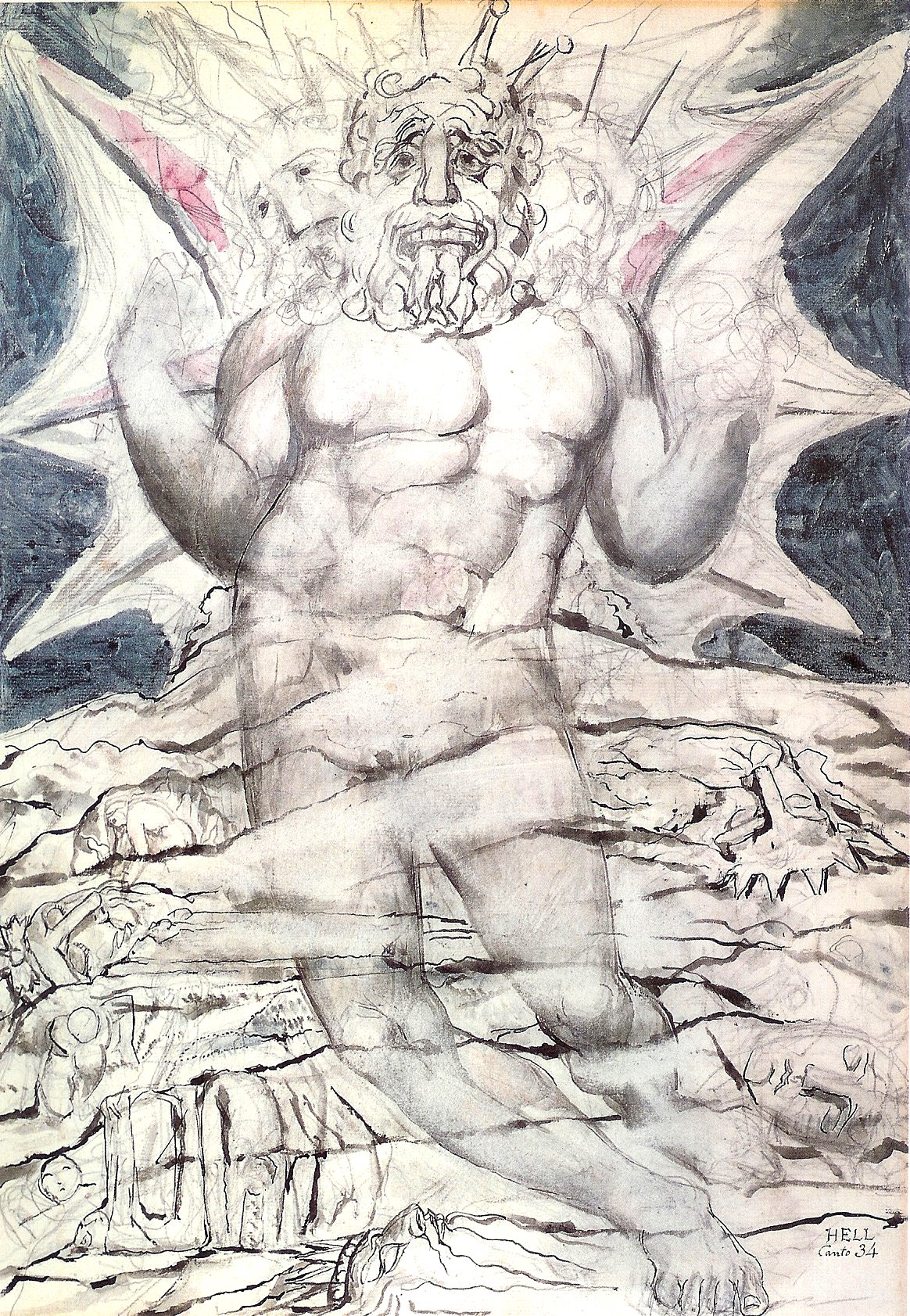
This presentation of Satan is wholly defined by the weight of the sin of his rebellion against God. In Inferno, Satan does not speak or interact with Dante, which means that readers only know how Dante perceives Satan. The Devil doesn’t have a chance to tell his story at all, so Dante’s horror is all we get.
This version of Satan from the year 1320 is a literal representation of Satan. This Devil is not a metaphor or a literary trope or comic relief, as he is the one and only Satan. (( I will also note that I am not talking about Milton’s Paradise Lost. ))
The Brothers Karamazov
On the other hand, The Brothers Karamazov (1879) takes a more metaphorical approach to The Devil. In this Russian masterpiece, Ivan, one of the main characters, experiences a mental breakdown after hearing about a troubling family affair. During this mental breakdown, Ivan hallucinates that he is talking with a man who claims to be Satan. This Devil looks very different from Dante’s version, as Ivan’s Devil is an older man wearing a suit, sitting in Ivan’s living room. In this book, this Satan is actually an imagined manifestation of Ivan’s self-doubt and guilt. His family’s news shakes Ivan’s perception of the world, so this Devil figure appears to punish Ivan.
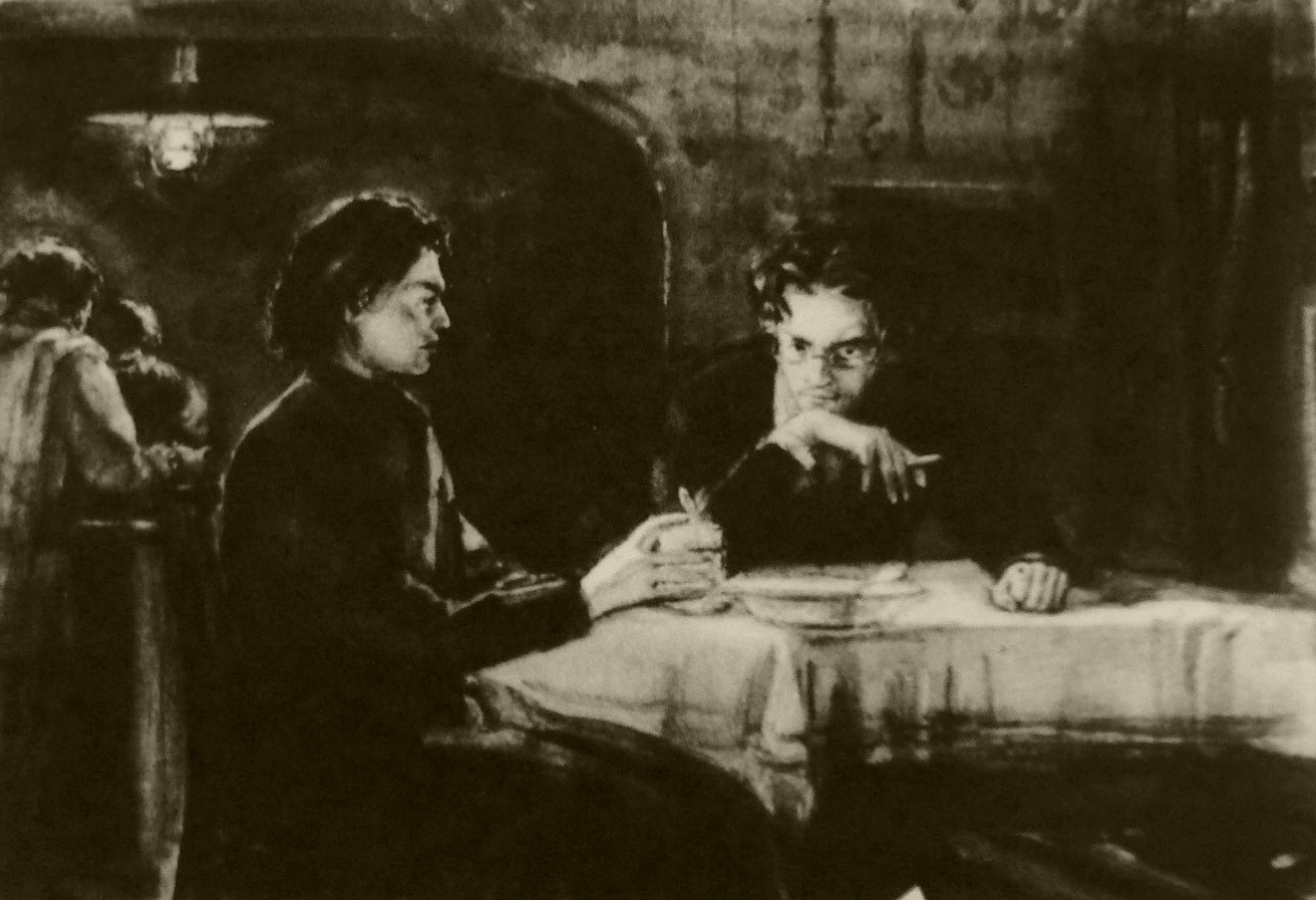
This representation of The Devil is not supposed to be a literal representation of The Devil, like what we see in Dante’s work. Instead, Satan is used as a literary device that further develops Ivan’s character and shows the extent of his mental breakdown. This Devil in The Brothers Karamazov acts as a physical representation of a character’s inner turmoil, not as a representation of the actual Devil. In more modern times, we see this idea of The Devil of the manifestation of the self continue to be developed in popular media.
The Emperor’s New Groove
The Emperor’s New Groove presents a more comical approach to the idea of Satan. Here, we see Satan’s presentation take a drastic leap as it moves from adult literature to children’s cartoons! In this Disney movie, a little angel and a little devil appear on Kronk’s shoulders when Kronk is faced with a tough decision. The little guys represent Kronk’s decision process; the angel tells Kronk to do the right thing, while The Devil tells him to do the more fun thing.
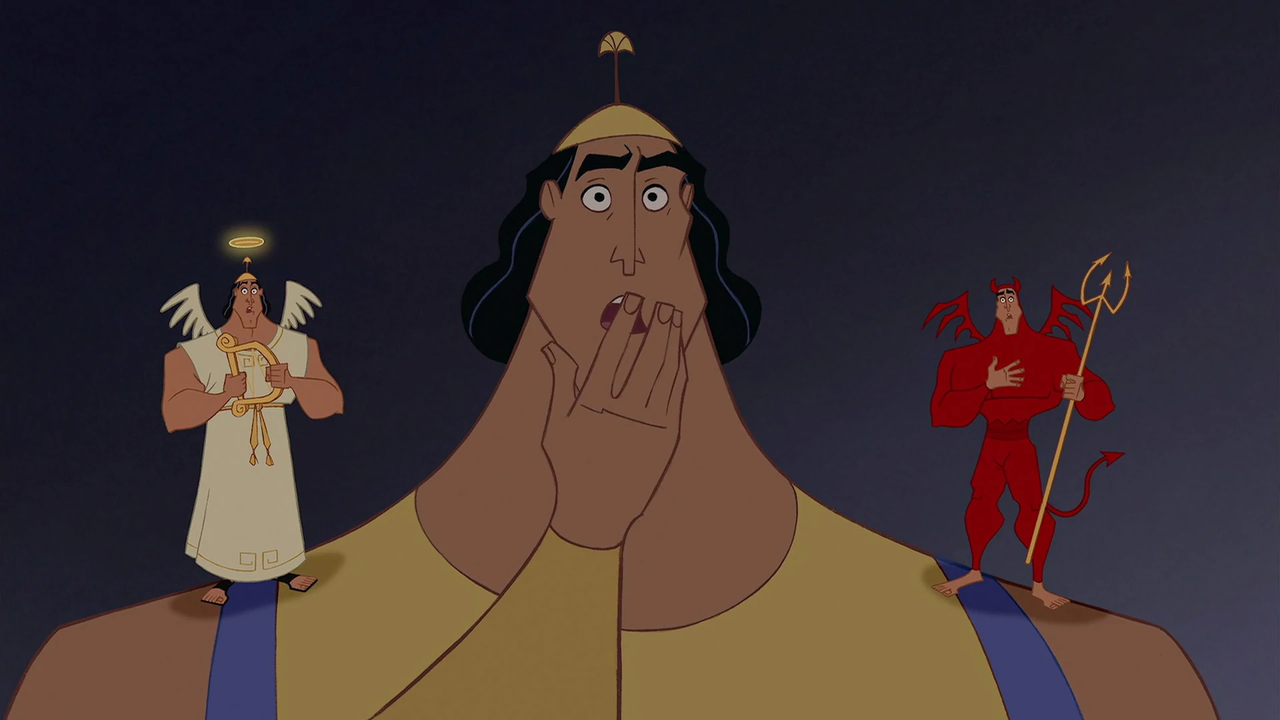
The idea of the shoulder angel and Devil is a popular trope, but it is most cleverly represented here. Again, a change of the collective understanding of The Devil is shown here, as The Devil is treated as something comical as opposed to terrifying and evil. At one point in the movie, the angel and The Devil even agree with each other! Much like Ivan, Satan is used here to develop a character further and show Kronk’s thinking process. However, Kronk’s situations and decisions are far more lighthearted and fun as opposed to earth-shattering.
Lucifer
Our modern media continues along this vein of a more fun Satan with the popular TV show Lucifer. Now, here is a version of Satan, who is more human than divine. Not only does this version of The Devil engage in copious amounts of “sin” (i.e., sex and drugs), he also spends a lot of his time trying to figure out his place in the world. And if trying to find one’s purpose isn’t human, then I don’t know what is.
Throughout the show, Lucifer argues against humanity’s depictions of him, as he claims that he is not the monster everyone thinks he is. This version of Satan isn’t a treacherous monster because he doesn’t lie or deceive people. While it’s true that Lucifer does enjoy punishing the guilty, he has no desire to attack or harm humanity as a whole. In fact, he prefers Earth over Hell, and he spends the majority of the show vacationing on Earth, enjoying humanity.
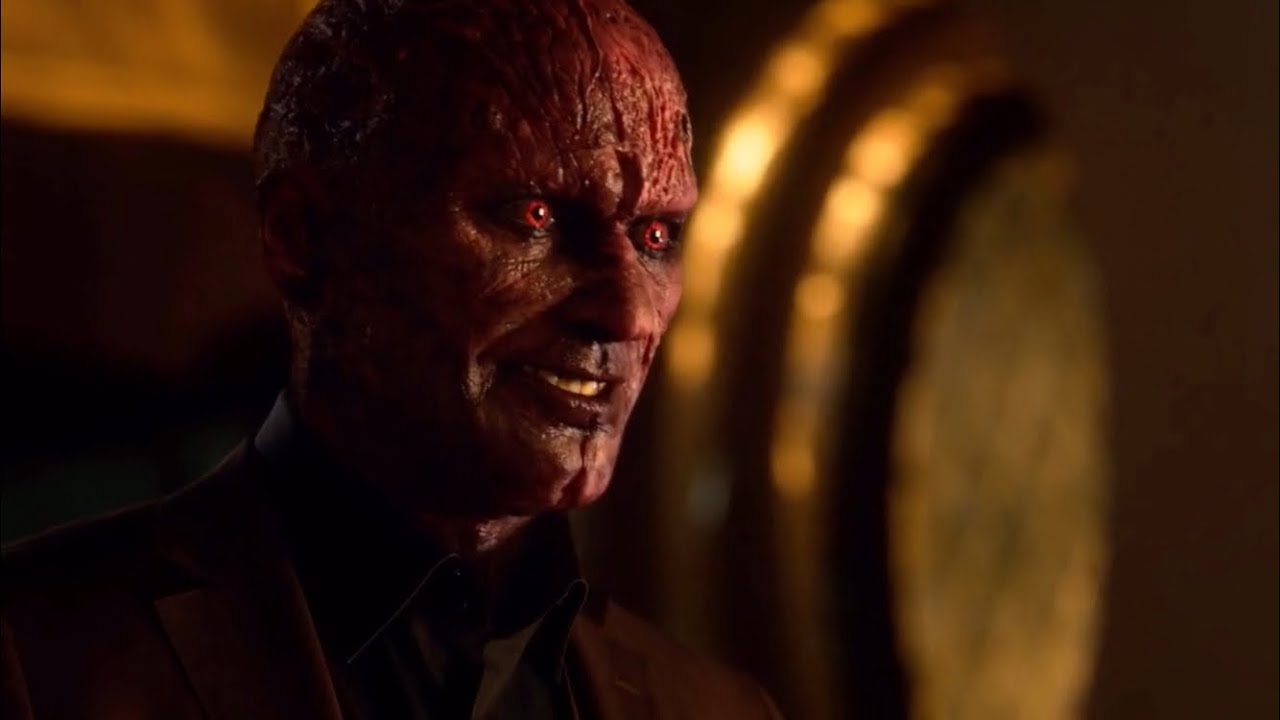
Additionally, this version of Satan is fully capable of love, and he even falls in love with a detective who lives in LA. Lucifer is still naturally very selfish, but his love and compassion define his character more than anything else. This Devil is one of the most human versions of Satan in modern media, and the show benefits from this fact as the series is top-rated. Lucifer does present viewers with an opportunity to rethink the character of The Devil: what if the character of Satan is more like us than we thought?
What We Can Learn From Depictions Of Satan
Based on this tiny media collection, it appears as though Satan’s trajectory as a character has changed quite a bit. From starting as a horrifying entity of evil to becoming an almost completely human exploration of what it means to be a forsaken son, The Devil has filled many roles. But what does this all mean for humanity, that our media presents Satan as so human? It’s interesting that Satan, who once was depicted as humanity’s greatest enemy, is now used to demonstrate the human experience. I think that breathing a new life into this character allows humanity to explore itself in ways it hasn’t before.
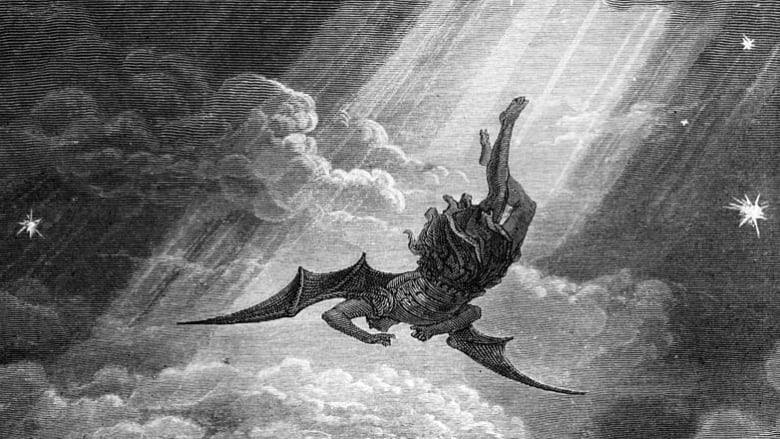
By rethinking the seemingly binary existence of good and evil, the media allows people to reexamine something that they may not have thought of much before. Maybe we’ll even learn something new about ourselves along the way.
